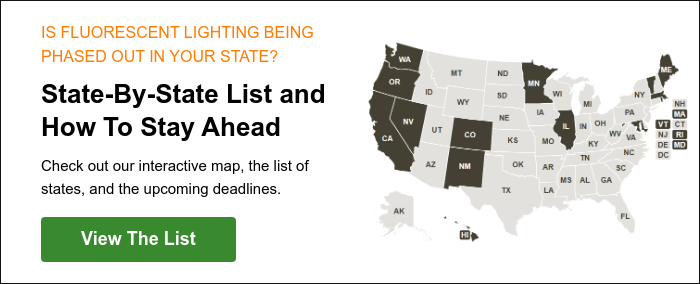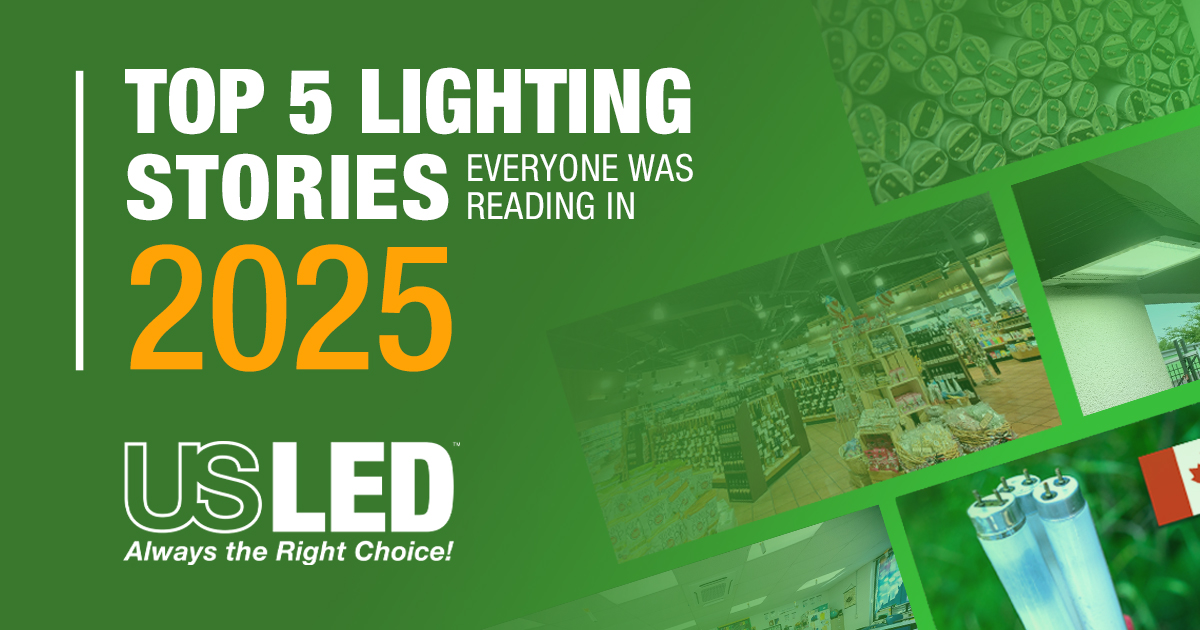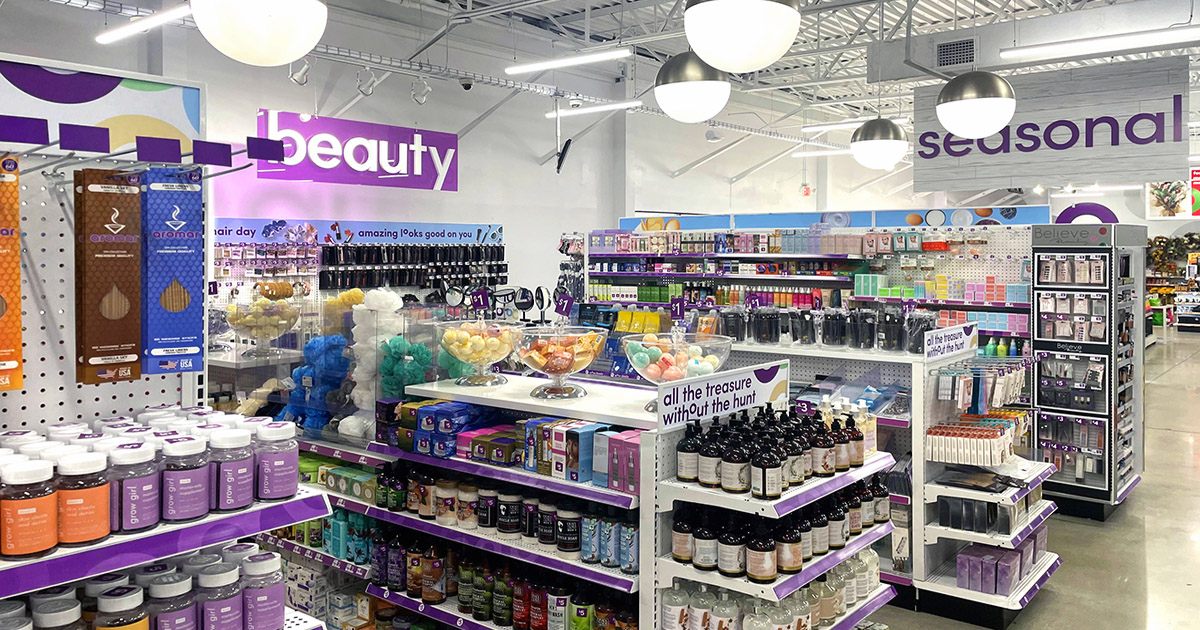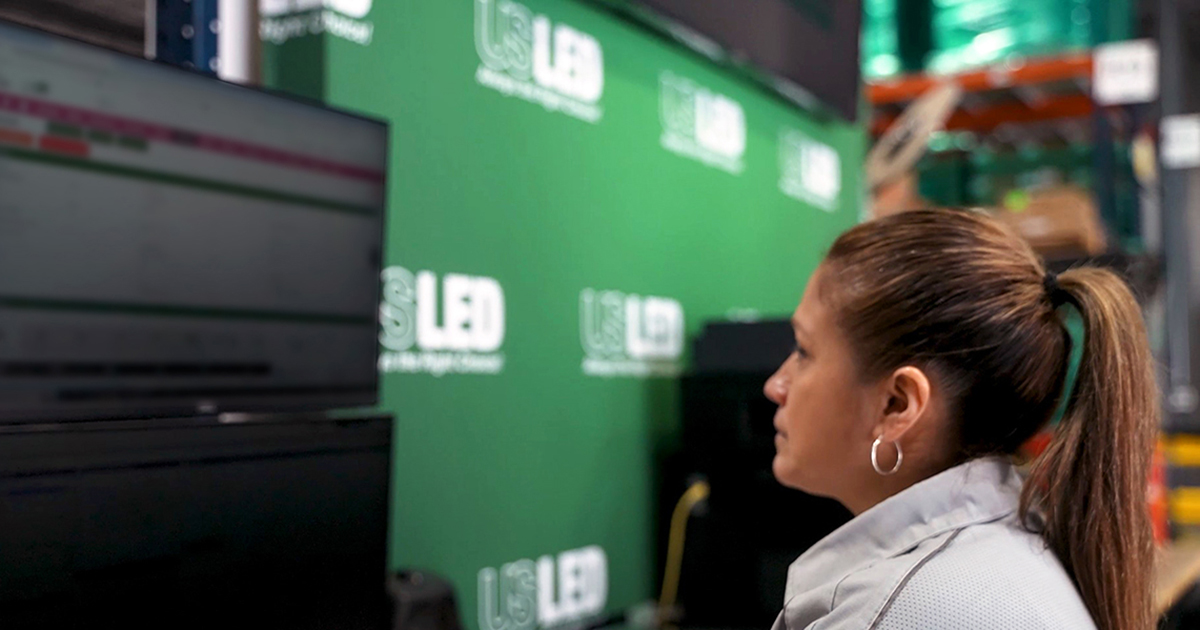
Discover more about commercial lighting rebates, how state-level fluorescent bans are influencing them, and how businesses can benefit the most.
When John, the operations manager of a large distribution warehouse in Maine, reviewed a recent energy audit, he was alarmed by the staggering costs associated with lighting. His facility is over 100,000 square feet and was primarily lit by outdated fluorescent lamps that are inefficient and costly to maintain. During a routine meeting, a colleague mentioned lucrative lighting rebates and the state-level ban on fluorescents, sparking John's curiosity. Upon conducting his research, he discovered that switching to LED lighting could qualify his warehouse for significant rebates, immediately leading to substantial energy savings now while avoiding the issues of the fluorescent ban later.
John's experience is not an isolated case. It reflects a trend sweeping nationwide, where numerous states are enacting clean lighting legislation and implementing bans on fluorescent lighting. This transition is not just about ticking off regulatory requirements; it is a golden opportunity for businesses to tap into lighting rebates. These rebates, which can significantly slash the upfront costs of transitioning to LED lighting, perfectly align with broader environmental sustainability goals. Keep reading to delve deeper into lighting rebates, their connection with the fluorescent phaseouts, and the projected impact on rebate programs.
Understanding Lighting Rebates
What Are Lighting Rebates?
Lighting rebates are not just about energy efficiency; they are about your bottom line. These financial incentives, offered by utility companies, government agencies, and other organizations, can significantly reduce the initial cost of purchasing and installing new LED lighting systems. This means shorter payback periods and more attractive investments for property owners. Currently, 78% of the country is covered by commercial lighting rebates, with programs constantly evolving based on demand and available funds.
Benefit of Lighting Rebates
So why do utilities offer lighting rebates? Utilities have finite capacity. These energy efficiency programs help match that capacity with projected demand. It is more cost-effective to pay energy consumers rebates to lower their consumption than to build new power plants. Energy providers set annual goals to reduce demand that they work to meet. Energy efficiency programs help them meet their energy savings goals.
Their financial incentives encourage faster adoption of LED lighting that lowers energy overall demand. The environmental and sustainability benefits that accrue are just as significant as the economic implications of these rebates for many business owners.
Types of Lighting Rebates Available
Many utilities offer LED lighting rebate programs for new construction and retrofit projects. Rebates can be instant (or midstream), prescriptive, or custom, varying significantly among programs.
Instant (or midstream) rebate programs prompt lighting manufacturers to develop energy-efficient LED lighting solutions and encourage distributors to keep them in stock. These rebate programs allow distributors to offer discounts on qualifying products so the resellers can pass immediate savings to end users. Utilities reimburse distributors later for the discounts they provide to the end user.
Utilities that offer prescriptive rebates have specific guidelines for energy-efficient lighting upgrades and rebate amounts for each product installed that meets their predetermined qualifications. Depending on the project scope, the utility may need to pre-approve the estimated rebate amount and conduct a post-installation inspection before awarding funds.
A custom rebate is created to incentivize unique equipment or process changes that can help reduce energy consumption and demand. These rebates typically apply to equipment not covered by instant or prescriptive programs. Instead of specific guidelines for energy-saving upgrades, customers need to demonstrate that a project will save energy. The rebate amount will vary based on kilowatt-hours (kWh) and kilowatts (KW) saved.
The Shift Away From Fluorescent Lighting
Reasons Behind Fluorescent Phaseouts
Once popular for their energy efficiency, fluorescent lamps are being replaced by LED lighting, which is even more energy-efficient and environmentally friendly. The transition to LEDs is expected to reduce carbon dioxide emissions by approximately 11.6 million metric tons by 2050 and save 5,675 gigawatt-hours of electricity in 2030.
This shift is crucial due to their relative inefficiency and toxic elements contained in fluorescent tubes, particularly mercury, which can harm human health and the environment. According to CLASP, it’s estimated that 75% of fluorescent lamps used in the United States are not recycled or disposed of properly. Because of that, states are enacting new “clean lighting” laws prohibiting the sale and distribution of screw-based, pin-based, and linear fluorescent lamps to address improper disposal and contamination issues.
States Implementing Fluorescent Bans
Several states have already passed laws banning fluorescent tubes with broad support. In the last half of 2024 and 2025, more state legislatures are expected to take the opportunity to pass similar regulations to cut utility costs, combat carbon emissions, and protect the environment. Click on the interactive map below to view the list of participating states and their fluorescent phaseout deadlines.
Impact of Fluorescent Bans on Lighting Rebates
Increased Demand for LED Lighting
The transition from fluorescent to LED lighting is causing a rise in the popularity of tubular LEDs (TLEDs). Despite the initial anticipation that TLED rebates would be phased out following the federal legislation that eliminated many traditional general-service, medium-base lamps, some rebates have remained. According to fulfillment firm BriteSwitch, the average rebate is $3.96 per lamp.
Changes in Lighting Rebates
If states have no laws inhibiting the sale or distribution of fluorescent lamps, available rebates will likely remain in place. However, it is still too early to determine if utilities will continue to offer rebates for TLEDs now that fluorescents are no longer available.
For instance, Vermont's ban on linear fluorescent lighting took effect on January 1, 2024. When the legislation passed in 2022, their state rebate program, Efficiency Vermont, discontinued TLED rebates. This action is just one example, and with more state-level bans starting in January 2025, it is still being determined what will occur in those states.
For some, lighting rebates may still be required to encourage organizations to switch to LED tubes. Installed fluorescent lamps may last several more years before burning out. Large schools and office buildings often have large inventories of replacement fluorescent tubes. Some utilities might struggle to meet their demand reduction goals if they discontinue rebates for TLEDs.
How To Maximize Lighting Rebates
Research State-Specific Rebate Programs
With over 3,000 utilities across North America, rebates and incentives vary significantly between geographic locations and could be tricky to navigate. Therefore, working with a partner who understands how these energy-saving programs work removes the uncertainty from the rebate acquisition process. It is essential to understand each applicable rebate program and its requirements and keep up with the changes. It is important to know that funds become depleted as participation increases in each area. Rebates are not guaranteed, and a lower amount than expected, or nothing, might be received.
Other Considerations For Lighting Rebates
Before beginning the installation process, it is essential to obtain pre-approval and ensure that all necessary forms are accurately completed. It is crucial to know whether a certain product qualifies, including whether a DLC listing is required and whether the particular model is listed on DLC. Once the installation is complete, verification may require an onsite or virtual inspection.
Projects in the affected states should be prioritized to stay ahead of the fluorescent phaseout deadline dates and maximize available rebates. US LED’s return on Investment (ROI) analysis can reveal immediate energy savings, project payback, the cost of waiting, and environmental impact. As part of the analysis, US LED can estimate the total applicable rebates for each lighting project, complete the appropriate documentation, and help ensure you get the funds.
Putting Lighting Rebates To Work
Commercial lighting rebates are a powerful tool for businesses upgrading to energy-efficient LED lighting, but navigating the process can be complex. With state-level fluorescent bans potentially affecting rebate programs, working with a lighting expert is crucial to maximize financial incentives. US LED offers comprehensive installation and project management services nationwide, including help obtaining available energy rebates. Do not miss the opportunity to brighten your future and stay ahead of phaseouts. Contact US LED to discuss your next energy-saving lighting project.











